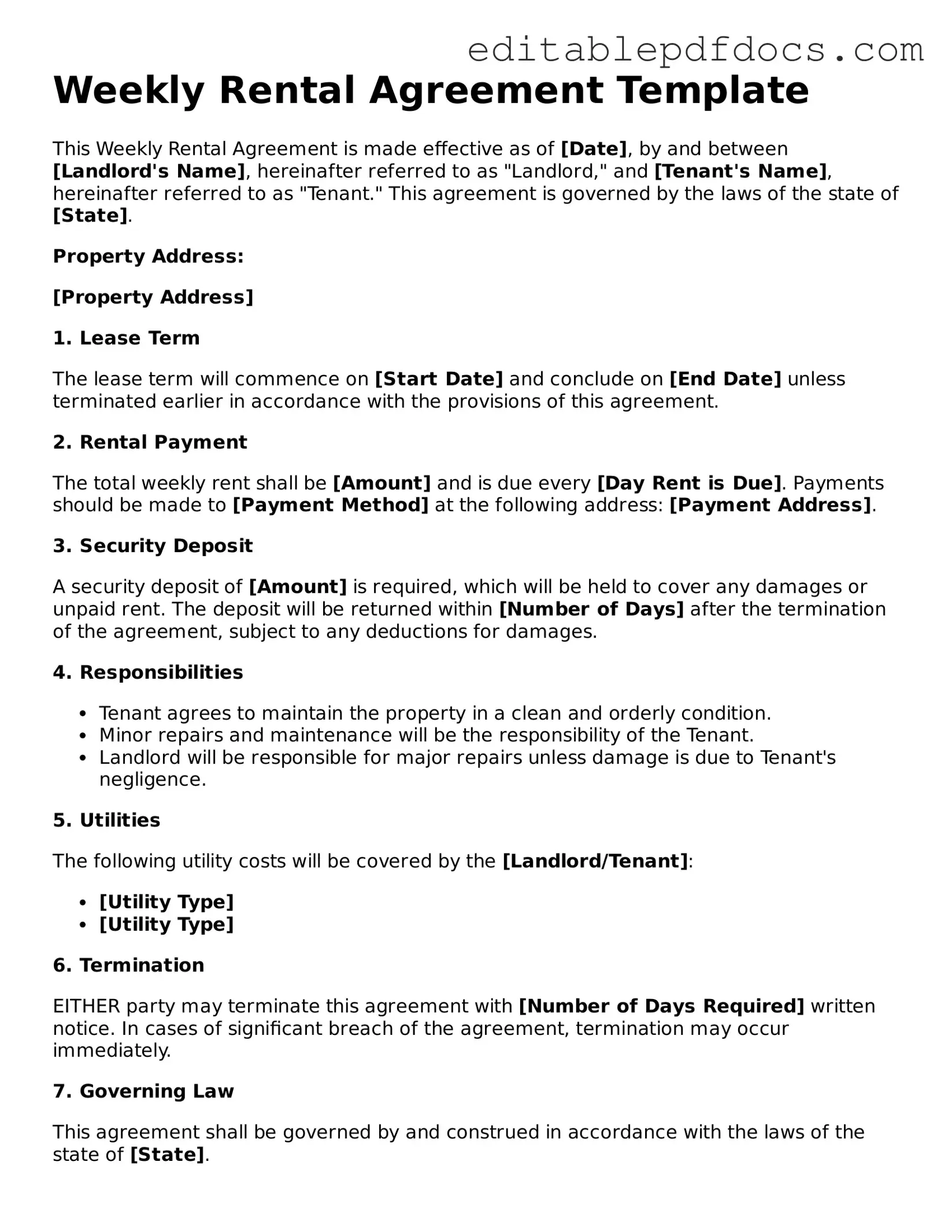Filling out a Weekly Rental Agreement form can be straightforward, but many people make common mistakes that can lead to confusion or disputes later. One frequent error is failing to provide accurate personal information. It's essential to include your full name, address, and contact details. Missing or incorrect information can delay the rental process.
Another common mistake is not specifying the rental period clearly. Some individuals forget to indicate the start and end dates of the rental. This omission can create misunderstandings about the duration of the rental agreement.
Many people also overlook the importance of reading the terms and conditions. Skipping this step can lead to agreeing to unfavorable terms. It is crucial to understand what you are signing, including payment schedules and any rules regarding the property.
Providing an insufficient security deposit is another mistake. The amount required is often outlined in the agreement. Failing to include the correct deposit can result in the agreement being deemed invalid.
Some renters forget to check the payment methods accepted by the landlord. If you do not confirm this information beforehand, you might find yourself unable to make the necessary payments on time.
Another error is neglecting to note any existing damages to the property before moving in. Documenting these issues protects you from being held responsible later. Take photos or write down any damages and share them with the landlord.
People often forget to sign the agreement. A signature is a vital part of the document, and without it, the agreement is not legally binding. Ensure that you and the landlord both sign and date the form.
Additionally, failing to keep a copy of the signed agreement is a common mistake. It is wise to have a copy for your records. This can be helpful if any disputes arise in the future.
Not communicating with the landlord can lead to misunderstandings. If you have questions or need clarifications, reach out. Open communication fosters a better rental experience.
Lastly, rushing through the process can result in errors. Take your time when filling out the Weekly Rental Agreement. A careful review can help prevent many of these common mistakes.
